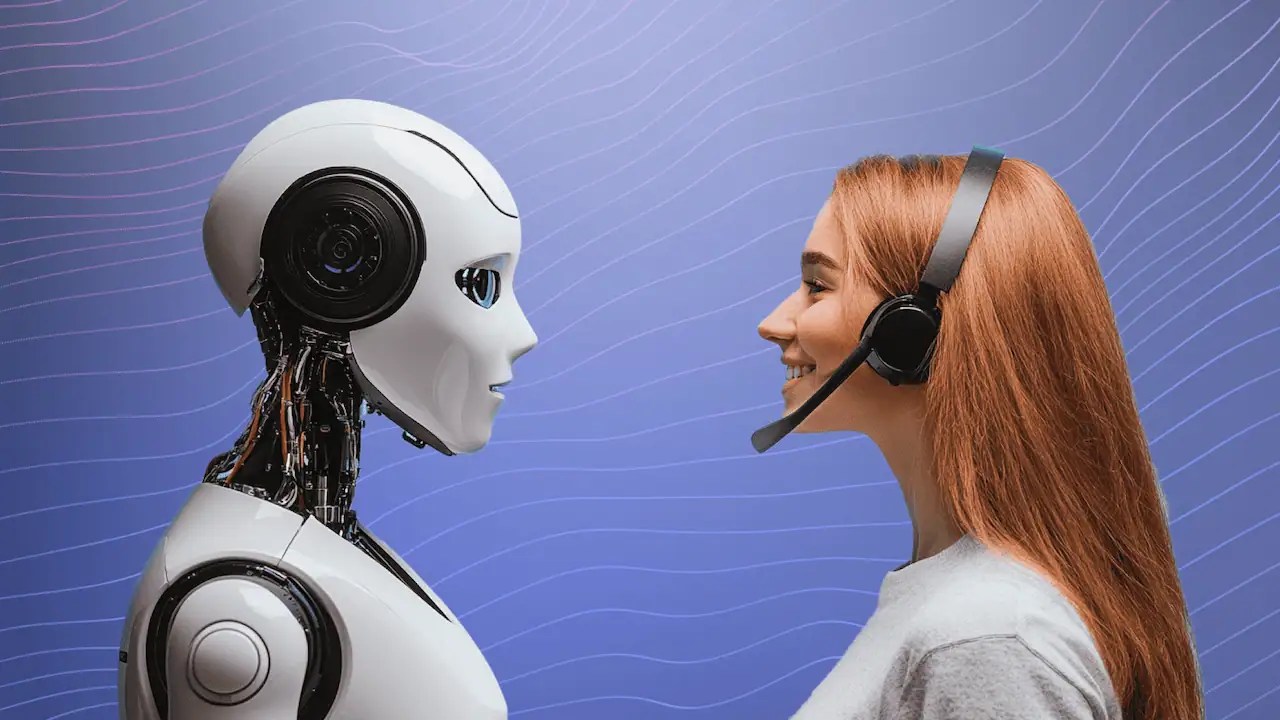There’s plenty of debate about whether artificial intelligence (AI) or human agents are better for customer support, but this is a false dichotomy. Businesses don’t have to choose between AI and live support agents, and ultimately, they shouldn’t.
Trained support agents will always be essential for handling complex issues and providing the human touch that customers want, but AI offers exceptional scalability potential. Customer experience (CX) and customer support leaders will benefit from building hybrid models that leverage the strengths of human support agents and AI systems, which can complement each other.
Where AI Shines in Customer Support
Nextiva’s CX trends report found that 92% of companies have adopted AI in some capacity for CX, and there’s a good reason for that. AI has clear strengths in customer support, including speed, cost-efficient scalability, and automation.

Speed and availability
AI technology is now capable of providing instant response times, with quick answers to common customer inquiries through 24/7 support. AI-powered chatbots, for example, can help customers who:
- Need to check their order status or tracking information, but don’t want to call to do so
- Need help with product questions or recommendations when they are trying to make buying decisions
- Want to process a payment or make a purchase
AI chatbots can offer exceptional customer support and are particularly popular among customers who want self-service options. Generative AI customer support is advancing at an increasingly rapid pace and may become capable of handling more complex customer queries.
Handling repetitive tasks
AI is exceptional when used for streamlining routine tasks that can otherwise bog down human agents with time-consuming busy work. Examples of repetitive tasks that AI can efficiently handle include:
- Answering password reset requests
- Sending appointment reminders
- Routing calls to the right departments
- Processing basic transactions
- Checking account balances
These are all basic tasks, but they are essential to customers. AI can tackle them, so your live customer service agents can dedicate their time to dealing with more complex issues. From a customer trust perspective, this is a safe bet because 49% of consumers say they are comfortable with AI handling routine tasks.
Scalability without hiring sprees
AI offers unparalleled scalability potential. It doesn’t need to sleep or take breaks, and there are no limits to how many customers it can help. You won’t need to hire new agents to scale effectively if you deploy AI, which makes it particularly useful for start-ups, contact centers, businesses with tight budgets, and brands with seasonal surges.
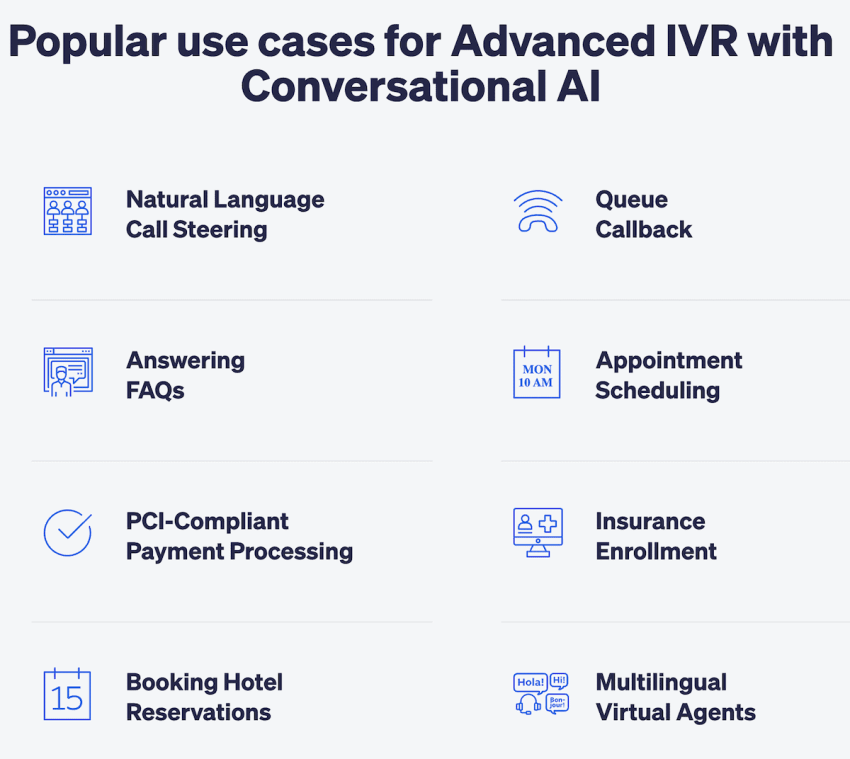
Where Humans Still Matter Most
AI will likely play an increasingly important role in customer service in the coming years because of advancements in generative and agentic AI.
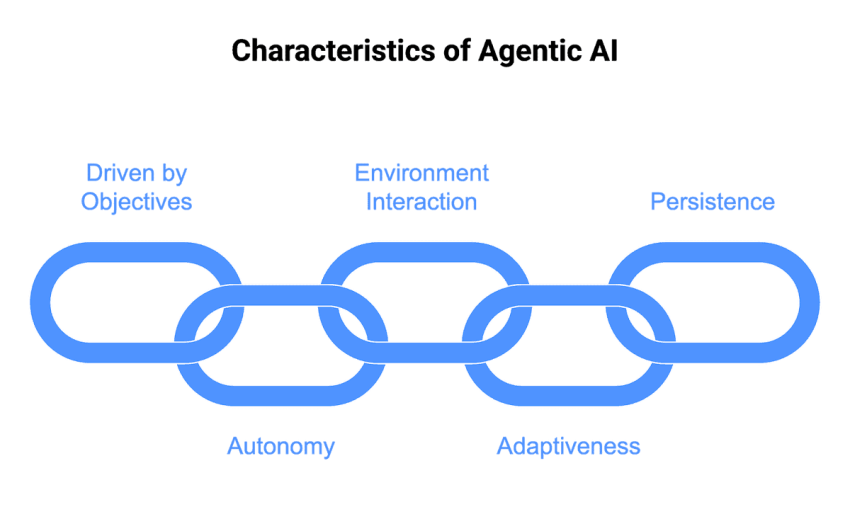
However, human agents will always be essential for strong support when it comes to sensitive issues, complex problem-solving, and relationship building.
Complex, sensitive, or high-emotion issues
Customers want to speak to a real person on their preferred channel when issues are sensitive, emotions are high, or the problems are too nuanced for AI to handle. Empathy and emotional intelligence remain uniquely human qualities and are essential when customers need certain types of services, including:
- Help with ongoing concerns around specific issues
- High-stakes assistance for problems like credit card fraud or accounts being hacked
- Advanced troubleshooting technical support
Problem-solving with judgment
Generative AI is advancing incredibly quickly, but it still isn’t a good choice for customer needs that require problem-solving and human judgment. Customers with complex concerns want flexibility. They don’t want to just interact with a rules engine, which isn’t exactly where AI thrives. Flexibility may be helpful if you have an out-of-policy situation or an edge case that may require critical thinking.
For example, your company may have a no-refund policy for all custom orders. Suppose a long-time repeat customer contacts you about a quality concern. In that case, however, you don’t want to inform them that there are no refunds and move on, because that could result in the loss of an otherwise valuable customer relationship. Instead, a human agent could offer a complementary replacement or other personalized solutions.
Relationship building
While AI is efficient and can undoubtedly offer convenience through automation, it isn’t adept at customer relationship building. In contrast, human service can build customer trust, rapport, retention, and ideally, advocacy.
Chewy is known for its relationship-building service. The company issues refunds for orders placed before a pet’s death and sends cards or flowers to the pet’s bereaved owner. These actions can win customers for life.
So, let’s examine, in a nutshell, how humans compare to AI in customer service.
Human vs. AI Support Comparison
| Function | AI Customer Service | Human Customer Service |
|---|---|---|
| Availability | 24/7 instant response | Limited to business hours |
| Speed | Answers common queries in seconds | Depends on hold time and ability to check documentation |
| Task type | Repetitive, rule-based tasks | Complex, nuanced, emotion-rich issues |
| Scalability | Adds capacity without extra headcount | Requires hiring and training |
| Empathy & judgment | Limited emotional intelligence | Strong empathy and critical thinking |
| Cost per interaction | Low | High |
| Relationships | Limited | Builds trust and loyalty |
| Ideal role | First-line triage, data capture, agent assist, transactions | Escalations, personalized customer care |
The Power of the Hybrid Approach
Combining AI customer service and trained, experienced human agents can help you create an exceptional CX, which offers distinct benefits. Here’s a closer look at why the hybrid approach is essential for modern customer support teams.
Efficiency without compromise
You can leverage AI to help customers address basic inquiries and more quickly route them to the right support team members. Doing so frees up your agents, ensuring they’re only focusing on high-value interactions that actually require their attention. This is a win-win for all customers, and it can decrease their wait times and your customer effort score.
Real-time assist for human agents
AI will never replace human agents, but it can help them excel in their jobs. Real-time assist, for example, allows AI to suggest answers based on relevant data and prompt next steps based on the conversation’s current direction. Real-time assist removes some of the guesswork while still leaving human agents firmly in control.
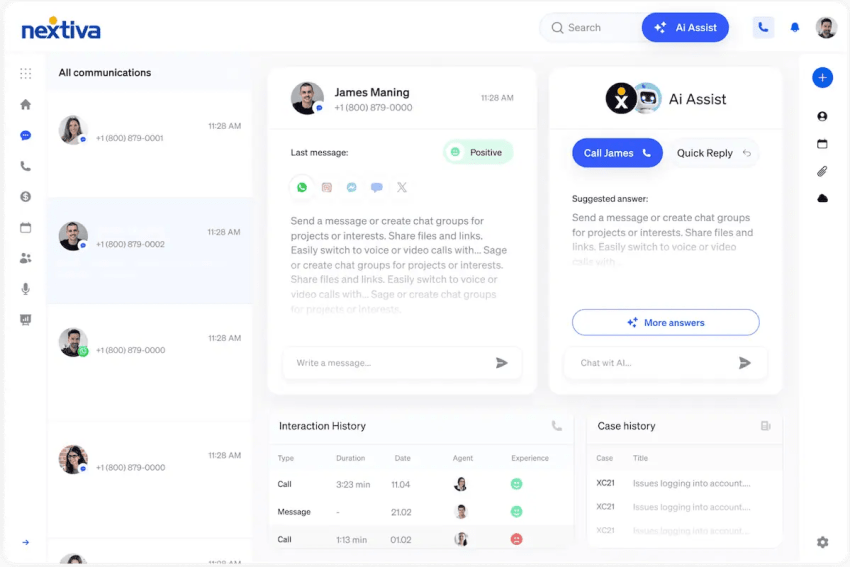
Seamless AI-to-human handoffs
Nextiva’s State of CX report found that 98% of CX leaders said smooth AI-to-human transitions were critical, but 90% said they still struggle with this. Keep in mind that bad handoffs are worse than not using AI because they can disrupt and create friction in CX.
Fortunately, the right platforms can facilitate seamless transitions that route customers to the right person to help them. Nextiva’s platform, for example, creates frictionless transitions across voice, chat, and other support channels for an optimal CX.
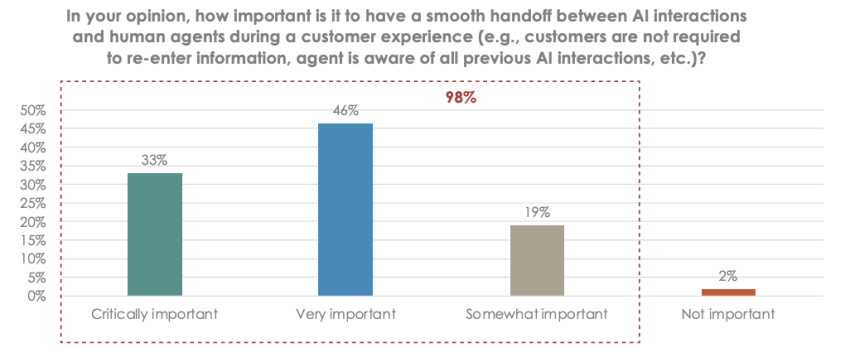
Best Practices for Combining AI and Human Customer Service
To effectively leverage AI in your CX, these best practices can help you strike the right balance between automation and human touch to maximize scalability without sacrificing CX.
1. Start with the customer journey
It’s important to consider how AI and human agents will be able to assist customers across the entire customer journey. Map out the most common scenarios across the full customer life cycle, including sales, onboarding, support, and renewals. Which touchpoints are frequent and transactional, which are great for AI, and which are rarer but high-stakes (and require the human touch)?
For example, basic customer inquiries through a chatbot on your website through a chatbot can likely be fielded by AI. Dedicated human support for onboarding, however, may be a critical part of customer success. Use AI where it resolves pain points and helps you quickly address basic customer needs; don’t just jump on trends.
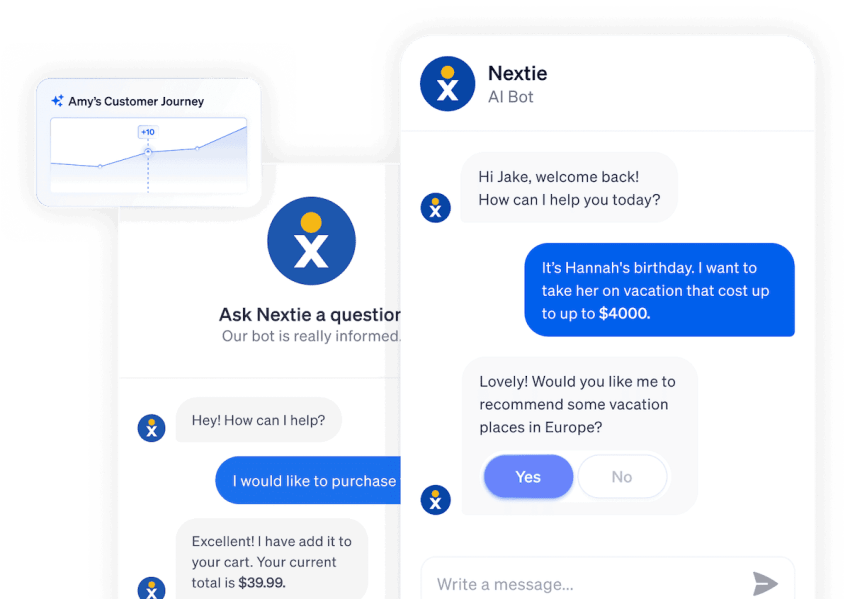
2. Segment support by complexity
Different types of support have unique levels of complexity, and it’s important to account for that. Bottom-tier requests may include order status updates, password requests, and basic questions about billing or account balances. These are all great options for automation.
Mid-tier inquiries — such as more complex product questions for your sales team — should be assigned to hybrid workflows. For example, a chatbot may begin the conversation but then escalate it with relevant context according to an assigned workflow.
Make sure that you keep high-complexity and high-emotion issues in human hands. AI can help speed things up with automation or real-time assistance, but it’s best for complex requests to go straight to support agents.
3. Let data be your guide
Real-time analytics and sentiment data gleaned via AI algorithms, machine learning, and natural language processing can help your team understand where friction exists in your current customer journey, helping you identify where introducing AI could optimize CX.
You should track deflection rates, time to resolution, and customer satisfaction scores across AI and human interactions to find friction points. Data-driven insights like sentiment analysis can also help you understand how customers feel about your support processes.
Use this information to adjust your workflows over time. The right balance won’t be static and will evolve with your business, your customers, and new trends.
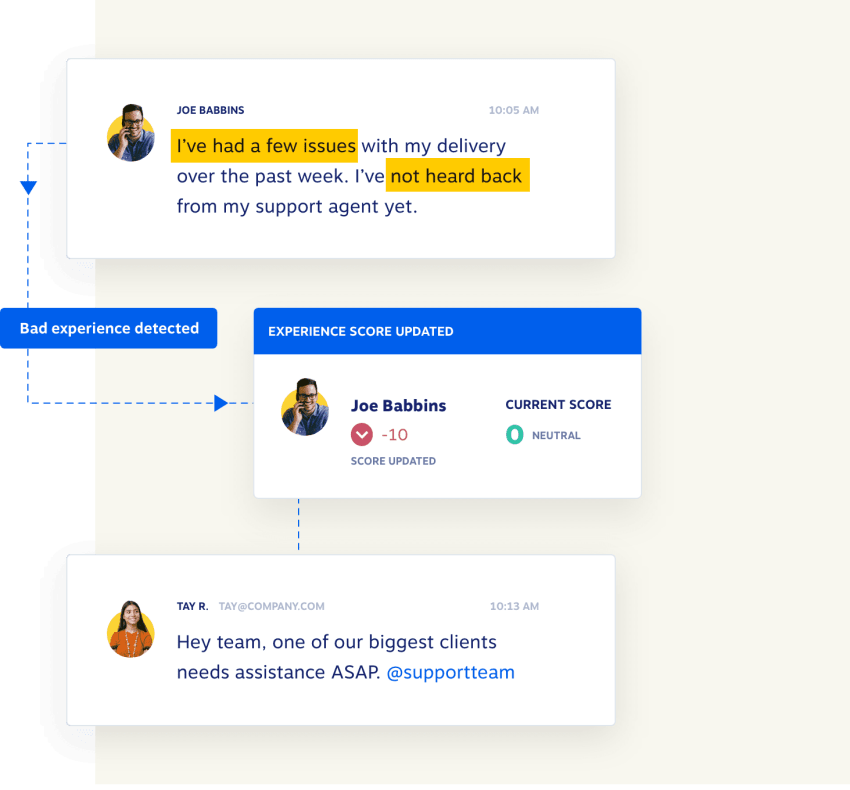
4. Define clear AI-to-human escalation paths
Contact center AI features are always valuable assets, but even the best AI-powered chatbots have their limitations, so human intervention is required.
Customers shouldn’t feel like they’re trapped in a bot loop, so build clear, easy exits to human agents. To be seamless, a transition must include all the context from the initial conversation, giving agents the full information they need to continue the interaction.
This isn’t just a CX best practice — it’s also an essential customer retention strategy.
5. Align teams around use cases, not channels
AI is most effective when targeting specific use cases, not just service channels. Break down internal silos that split support by voice, chat, and email. You can organize teams to solve specific types of customer problems regardless of what channels they’re in.
AI and humans can work together most effectively when teams aren’t bogged down by channel-specific silos and your teams can create a truly seamless customer service experience.
6. Pilot, test, and scale intentionally
Every business needs to find its own unique AI workflows and determine which features work best for it. To make sure that your new initiatives are truly benefiting your team and customers, you should roll out new AI features in phases. Start with a single customer touchpoint or workflow before scaling it up.
Test the new experience from the customer’s and agent’s perspectives. Look at customer data to make sure their new experience is positive before fully adopting the new feature or workflow. Use pilot features to uncover any friction early in the process and to build your internal teams’ confidence by demonstrating how the new workflows can make their jobs easier and improve customer interactions.
Nextiva: Your AI-Powered Contact Center Solution
When it comes to AI vs human customer service, Nextiva is the best choice. It’s an AI-powered contact center solution offering omnichannel support and advanced features like AI chatbots, sentiment analysis, and recommendations based on customer data and insights, bringing the future of customer service right to you. Our unified platform has built-in AI, so there’s no need for patchwork systems or separate AI layers. There’s a single log-in for voice, chat, video, SMS, and your AI tools.
This is imperative for AI that supports customer service functions without replacing that invaluable human touch. You can leverage features like real-time assistance, smart routing, and predictive insights to quickly address customer needs. These features are all designed to help agents, not edge them out.
Ultimately, a hybrid approach of AI-driven automation and scalability combined with the invaluable human touch is crucial for strong CX today, and Nextiva can help you get there.
Ready to empower your customer service teams with AI functionality? Check out Nextiva’s AI-powered contact center solutions.
Top Ranked AI-Powered Contact Center Solution
Transform your customer interactions with a contact center platform that saves you time and money, reduces agent and supervisor stress, and flexibly adapts to fit your needs.

















 Customer Experience
Customer Experience 

